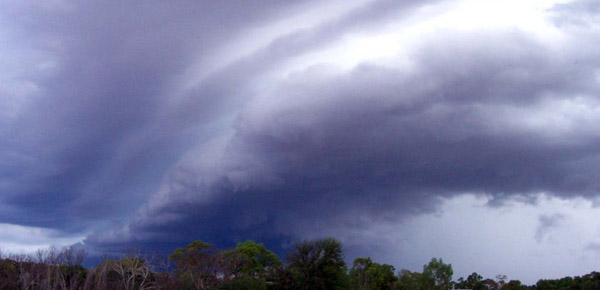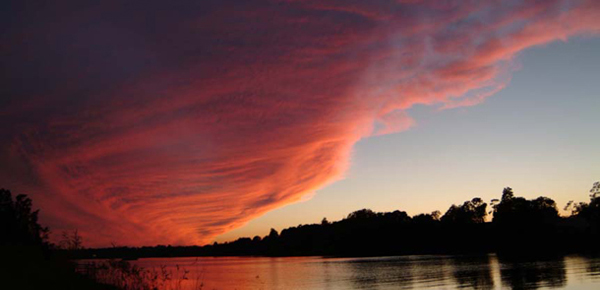Featured Posts
Weather Patterns
May 23, 2009 by admin · Leave a Comment
Before looking into patterns of common weather, you should first understand the terms. Most people will be confused and think that weather is the same with climate. To put it in simpler terms, the climate is the atmospheric condition average for a certain region, during longer periods of time. Usually, that time period is around 30 years. The climate in such a case doesn’t change for many years.

Remember, the climate represents the average, so it doesn’t tell you if the weather will be stormy, cold or warm during a certain day of the year. Those changes on a regular basis represent the weather in a region. When those changes stop, the average conditions return.
The patterns of the weather are related directly to the climate. Experts will say that the climate is the average pattern of the weather in a certain area. A weather pattern that takes a long time can me mistaken as climate sometimes. You can also consider weather patterns as the weather types that are distributed or spread across the planet.
That’s why knowing how weather patterns work can prove to be useful. You’ve probably seen that the weather patterns have changed compared with the past. You can see news all the time on destructive hurricanes and extreme warmth levels, and the warning is little or none. La Nina and El Nino are the two main types of extreme weather conditions that are unpredictable.
El Nino takes place in the Pacific Ocean and the water become warm, leading to rain and high temperature. As for La Nina, the water becomes cold in the Pacific Ocean. La Nina can cause either cold or warm weather.
Weather and climate experts say that atmospheric condition changes lead to global warming. Greenhouse gas emissions from humans can be the reasons for the current problems on predicting the pattern of the weather.
Preparing for a Hurricane
May 23, 2009 by admin · Leave a Comment
In most cases, people don’t think about doing hurricane preparations until it’s almost too late. Preparing for a hurricane means focusing on the tasks that are tougher to do when the storm is closing in. In most cases, these jobs will need you to invest days before they are finished.

Knowing what to prepare for
Understanding how to prepare in case of hurricanes means that you first need to understand what you should prepare for. There are some threads that arrive together with a hurricane: storms, high winds, flooding and tornadoes. If you want to find more information on the threats that come with a hurricane, there is plenty of information available online. After you understand what you’re dealing with, you should start preparing for the storms. For example, plan in advance what you should do if you’re separated from the family or what escape route to use.
Items to use
• Look around your property and find items, trees especially, that might fall on the house. The dead branches should be cut and if possible the same should be done with the trees.
• Get a portable radio, together with a NOAA weather radio, so you can get the latest news
• Ensure that the flashlight works as it should. Keep a spare with you.
• Get stocks of batteries, foods that aren’t perishable, pet food and bottled water. Get the medicine prescriptions that you need.
• Get propane for the grill, as a backup if the power goes down. In many cases, there will be weeks before the power is restored after a hurricane.
• You can also use a portable generator, if the power is down.
• You could also use a chain saw, if there are trees that fall on your house or on the road.
Cold Fronts
May 23, 2009 by admin · Leave a Comment
If you ask a specialist what a cold front is, you will probably get answers that are quite technical. There are simpler ways to explain what it is. Simply explained, it’s the part from the front of an air mass, which is cooler than the air found in its front. Since the mass of air is cool, the warmer air will be pushed and displaced.

The displacement phenomenon appears because the cold air can’t mix with the warm air, which is less dense. That’s why the cold air ends up pushing the warm air, and clouds form because of it. Such a cold front can sometimes be hundreds of kilometers long and often enough they come together with lower pressure.
If you want to understand what fronts are, you should learn about precipitations and temperature. In many cases, there is warm temperature before the passing of a colder front. As the front passes, there will be a drop in temperature and that take less than an hour sometimes. There is more of a gradual cooling as the front departs. During winter and autumn, these cold fronts can drop the air temperature a lot and they can last for weeks.
Precipitation can come together with changes in temperature. With enough moisture, there is the possibility of some showers before a front passes. These showers can become thunderstorms and later flooding. With bad storms flooding can appear as well. Also, even after cold fronts pass, they can still leave some light showers behind, if the clouds haven’t cleared yet.
Bad weather conditions aren’t always the end result of cold fronts though. Sometimes, if the cold fronts are only mildly so, you might not see temperature changes that are significant. If the moisture is insufficient, there might not be any showers or rains. Winter is usually when they are missing.
